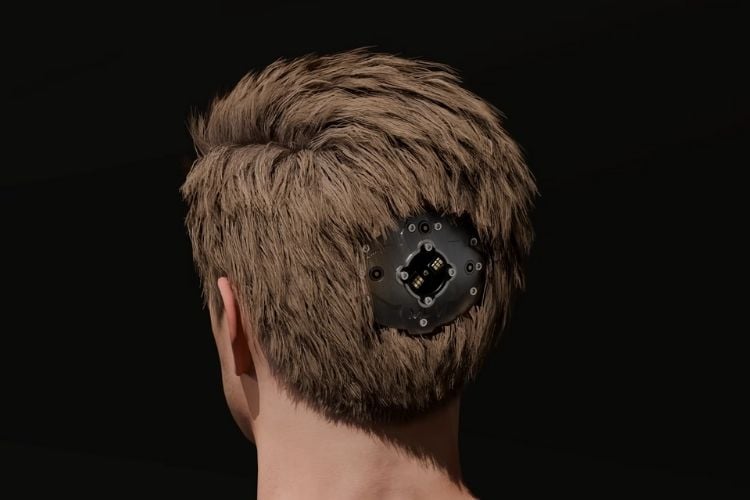
Creator, AstroSam, built a functional prototype of a brain-computer interface (BCI), called Mind Link. It reads brain signals from a simulated 32-electrode array and sends them to a computer to visualize right away and possibly process later. The build combines custom PCBs, firmware, and magnetic connectors. The project is open-source and documented from scratch.
The system consists of stacked 20mm circular PCBs, connected via spring-loaded pogo pins. Being designed this way allows more layers to be added or swapped without surgery. All that’s needed is a screwdriver. Though the project remains non-implantable for the time being, a 3D-printed mount demonstrates how the device could attach to the back of a skull.
Connected to the motherboard is a Microchip ATmega32U2 microcontroller that was picked because of its built-in USB support. As the microcontroller does not have enough pins to read all the electrodes directly, the system uses four analog multiplexers and a counter IC to scan signals one at a time. The typically weak neuron-level signals (~0.15V) are amplified to usable 5V levels in a separate op-amp stage. Power and data are safely connected using a magnetic circular connector.
Data that has been read is visualized using a tool built with Processing, which simulates brain activity in real-time. Future plans include biocompatible enclosures using titanium or zirconium oxide ceramics, as they far better fit the purpose of implantation due to their inert properties. While it’s still a proof of concept, the Mind Link platform offers a place to start for open-source BCI development.

